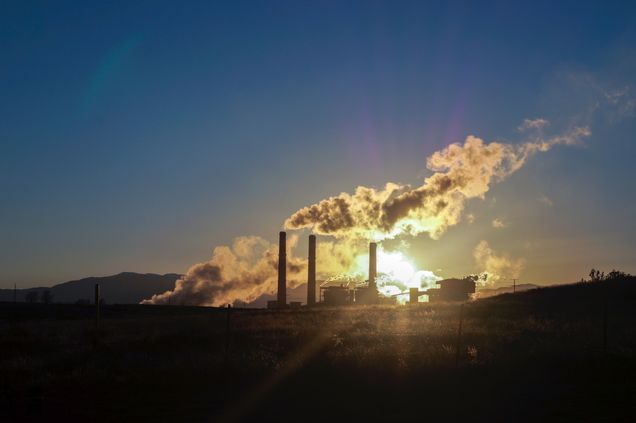GDP Center Round Up: UN Climate Change Conference (COP26) – Week Two

From October 31-November 12, the 2021 United Nations Climate Change Conference, also known as COP26, will take place in Glasgow, Scotland. The summit seeks to bring parties together to accelerate action towards the goals of the Paris Agreement and the UN Framework Convention on Climate Change. World leaders, policymakers, researchers, journalists, activists and others will be on the scene to interact, engage and discuss the global climate crisis and next steps for the international community. Delayed due to the COVID-19 pandemic, the meeting has been called “by far the most important gathering on climate change since nearly 200 countries adopted the Paris Agreement in 2015.”
To date, major developments have included more than 100 countries, including the United States, signing on to the Global Methane Pledge, which aims to slash emissions of the powerful greenhouse gas by 2030, and leaders representing more than 85 percent of the world’s forests pledging to halt and reverse deforestation and land degradation by 2030.
As the international community gathers for the second week in Glasgow, the Boston University Global Development Policy Center has produced a suite of research aimed at supporting a global, green and just transition. See highlights from our latest research below and read the Week One Roundup:
National Climate Funds Tracker
The first-of-its-kind, our newest interactive displays the national-level funding vehicles established to mobilize domestic and international climate finance. The National Climate Funds (NCF) Tracker identifies 46 funds across 39 countries and shows how these funds vary by host country, legal design, scope, mobilized finance and the level of success in attracting resources from multilateral climate funds. The interactive also tracks whether NCFs work with multilateral climate funds, such as the Green Climate Fund as implementing or executing entities. In all, the NCF Tracker provides the operating context for developing country actions on climate change. Explore the data.
Accelerating Climate Action through National Climate Funds

The international climate finance landscape has shifted significantly in the last decade, with national-level vehicles becoming an important part of the emerging climate finance architecture. A turning point in climate governance, these funds allow developing countries – many of which are disproportionately at risk to climate consequences – to have a stronger voice in how climate finance decisions are made. Despite the shift to national financing, comprehensive, reported data on national climate funds (NCFs) has been significantly lacking. A new policy brief by Rishikesh Ram Bhandary summarizes the history and workings of NCFs, outlines the trends and features from the new National Climate Funds Tracker and shares policy implications for host countries and fund contributors alike. Read the policy brief and read a blog summary.
Up in the Air: Potential Implications of Xi Jinping’s Green Energy and No-Overseas-Coal Announcement

In September 2021, Chinese leader Xi Jinping announced at the 76th United Nations General Assembly that China would increase support for low-carbon energy in developing countries and not build new coal-fired power projects abroad. Since then, much debate has ensued as to the exact policy details of the announcement. In considering the words ‘build’ and ‘new,’ what types of projects are likely to be included and how much CO2 emissions could be avoided as a result? What interpretation of the announcement would lead to the greatest curtailment of emissions? And what areas of renewable energy are prime for increasing Chinese support? A new policy brief by Cecilia Han Springer and Xinyue Ma explores the potential implications of the announcement, finding that if all overseas coal plants with Chinese capital participation and construction arrangements that are under construction and under planning are canceled as part of the announcement, 646 million tons of annual CO2 emissions could be avoided, more than Canada’s current annual fossil CO2 emissions. Read the policy brief.
Open-Source Methods for Estimating Health Risks of Fine Particulate Matter from Coal-Fired Power Plants: A Demonstration from Karachi, Pakistan

China’s Belt and Road Initiative (BRI) has been financing and building infrastructure projects across Asia, Europe, Africa and South America, including until recently, coal-fired power plants. Chinese actors largely defer to host governments when it comes to evaluating the environmental dimensions of BRI investment projects, including EIAs completed during planning phases to address localized environmental impacts. This means that a number of BRI projects are governed by weaker environmental policies, implementation and enforcement than in China and EIA enforcement is lax. A new journal article by a team of Boston University researchers presents an open-source approach for evaluating localized air pollution health impacts for BRI-financed coal-fired power plants. This analysis focuses on estimating attributable death from fine particulate matter (PM2.5), known to be major risk factor for premature deaths globally. Taking the case study of the Port Qasim Power Plant located near Karachi, Pakistan, the researchers tracked the likely additional local deaths from stroke, ischemic heart disease and chronic obstructive pulmonary disease. Read the journal article and read a blog summary.
Read the Week One Roundup
Never miss an update: subscribe to updates.